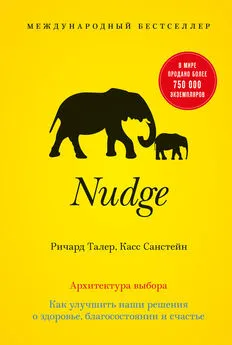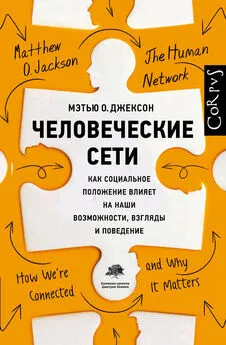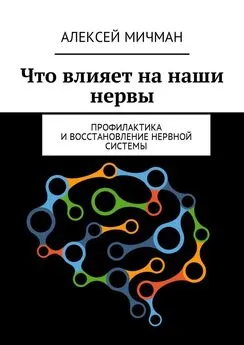Крис Пэйли - Не бери в голову. 100 фактов о том, как подсознание влияет на наши решения
- Название:Не бери в голову. 100 фактов о том, как подсознание влияет на наши решения
- Автор:
- Жанр:
- Издательство:Манн, Иванов и Фербер
- Год:2015
- Город:Москва
- ISBN:978-5-00057-623-6
- Рейтинг:
- Избранное:Добавить в избранное
-
Отзывы:
-
Ваша оценка:
Крис Пэйли - Не бери в голову. 100 фактов о том, как подсознание влияет на наши решения краткое содержание
На русском языке публикуется впервые.
Не бери в голову. 100 фактов о том, как подсознание влияет на наши решения - читать онлайн бесплатно полную версию (весь текст целиком)
Интервал:
Закладка:
46. J. M. Darley and P. H. Gross. A hypothesis-confirming bias in labeling effects. Journal of Personality and Social Psychology, 44(1):20–33, 1983.
47. J. M. R. Delgado. Physical Control of the Mind: Toward a Psychocivilized Society. Harper and Row, 1969.
48. C. N. Dewall, R. F. Baumeister, and E. J. Masicampo. Evidence that logical reasoning depends on conscious processing. Consciousness and Cognition, 17(3):628–645, 2008.
49. A. Dijksterhuis. Automaticity and the unconscious. In S. T. Fiske, D. T. Gilbert, and G. Lindzey, editors, Handbook of Social Psychology, pages 228–267, 2010.
50. A. Dijksterhuis, M. W. Bos, L. F. Nordgren, and R. B. Van Baaren. On making the right choice: The deliberation-without-attention effect. Science, 311(5763):1005–1007, 2006.
51. J. Doyon and H. Benali. Reorganization and plasticity in the adult brain during learning of motor skills. Current Opinion in Neurobiology, 15(2):161–167, 2005.
52. R. I. M. Dunbar. The social brain hypothesis. Evolutionary Anthropology, 6:178–190, 1998.
53. R. I. M. Dunbar and S. Shultz. Evolution in the social brain. Science, 317(5843):1344–1347, 2007.
54. D. G. Dutton and A. P. Aron. Some evidence for heightened sexual attraction under conditions of high anxiety. Journal of Personality and Social Psychology, 30:510–517, 1974.
55. A. J. Elliot, D. Niesta Kayer, T. Greitemeyer, S. Lichtenfeld, R. H. Gramzow, M. A. Maier, and H. Liu. Red, rank, and romance in women viewing men. Journal of Experimental Psychology: General, 139:399–417, 2010.
56. A. J. Elliot and D. Niesta. Romantic red: Red enhances men’s attraction to women. Journal of Personality and Social Psychology, 95:1150–1164, 2008.
57. N. Epley, A. Waytz, and J. T. Cacioppo. On seeing human: A three-factor theory of anthropomorphism. Psychological Review, 114(4):864–886, 2007.
58. M. H. Erdelyi. A new look at the new look: Perceptual defense and vigilance. Psychological Review, 81(1):1–25, 1974.
59. X. Fang, S. Singh, and R. Ahluwalia. An examination of different explanations for the mere exposure effect. Journal of Consumer Research, 34(1):97–103, 2007.
60. R. H. Fazio, J. R. Jackson, B. C. Dunton, and C. J. Williams. Variability in automatic activation as an unobtrusive measure of racial attitudes: A bona fide pipeline? Journal of Personality and Social Psychology, 69(6):1013–1027, 1995.
61. R. Ferraro, J. R. Bettman, and T. L. Chartrand. The power of strangers: The effect of incidental consumer brand encounters on brand choice. Journal of Consumer Research, 35(5):729–741, 2009.
62. L. Festinger. A Theory of Cognitive Dissonance, 2. Stanford University Press, 1962.
63. L. Festinger and J. M. Carlsmith. Cognitive consequences of forced compliance. The Journal of Abnormal and Social Psychology, 58(2):203–210, 1959.
64. L. Festinger, H. W. Riecken, and S. Schachter. When Prophecy Fails. University of Minnesota Press, 1956.
65. A. Floyer-Lea and P. M. Matthews. Changing brain networks for visuomotor control with increased movement automaticity. Journal of Neurophysiology, 92(4):2405–2412, 2004.
66. P. Fourneret and M. Jeannerod. Limited conscious monitoring of motor performance in normal subjects. Neuropsychologia, 36(11):1133–1140, 1998.
67. J. L. Freedman and S. C. Fraser. Compliance without pressure: The foot-in-the-door technique. Journal of Personality and Social Psychology, 4(2):195, 1966.
68. U. Frith and F. Happé. Theory of mind and self-consciousness: What is it like to be autistic? Mind and Language, 14(1):82–89, 1999.
69. M. T. Gailliot and R. F. Baumeister. The physiology of willpower. Personality and Social Psychology Review, 11(4):303–327, 2007.
70. M. T. Gailliot and R. F. Baumeister. Self-regulation and sexual restraint: Dispositionally and temporarily poor self-regulatory abilities contribute to failures at restraining sexual behavior. Personality and Social Psychology Bulletin, 33(2):173–186, 2007.
71. M. T. Gailliot, R. F. Baumeister, C. N. Dewall, J. K. Maner, E. A. Plant, D. M. Tice, L. E. Brewer, and B. J. Schmeichel. Self-control relies on glucose as a limited energy source: Willpower is more than a metaphor. Journal of Personality and Social Psychology, 92:325–336, 2007.
72. M. T. Gailliot, B. M. Peruche, E. A. Plant, and R. F. Baumeister. Stereotypes and prejudice in the blood: Sucrose drinks reduce prejudice and stereotyping. Journal of Experimental Social Psychology, 45(1):288–290, 2009.
73. M. S. Gazzaniga. Cerebral specialization and interhemispheric communication: Does the corpus callosum enable the human condition? Brain, 123(7):1293–1326, 2000.
74. N. J. Goldstein, R. B. Cialdini, and V. Griskevicius. A room with a viewpoint: Using social norms to motivate environmental conservation in hotels. Journal of Consumer Research, 35(3):472–482, 2008.
75. J. D. Greene, L. E. Nystrom, A. D. Engell, J. M. Darley, and J. D. Cohen. The neural bases of cognitive conflict and control in moral judgment. Neuron, 44(2):389–400, 2004.
76. J. D. Greene, R. B. Sommerville, L. E. Nystrom, J. M. Darley, and J. D. Cohen. An fMRI investigation of emotional engagement in moral judgment. Science, 293:2105–2108, 2001.
77. A. G. Greenwald, D. E. McGhee, and J. L. K. Schwartz. Measuring individual differences in implicit cognition: The implicit association test. Journal of Personality and Social Psychology, 74(6):1464–1480, 1998.
78. D. M. Gromet and E. Pronin. What were you worried about? Actors’ concerns about revealing fears and insecurities relative to observers’ reactions. Self and Identity, 8(4):342–364, 2009.
79. N. Guéguen. Mimicry and seduction: An evaluation in a courtship context. Social Influence, 4:249–255, 2009.
80. C. L. Hafer and L. Bégue. Experimental research on just-world theory: Problems, developments, and future challenges. Psychological Bulletin, 131:128–167, 2005.
81. A. M. Haffenden, K. C. Schiff, and M. A. Goodale. The dissociation between perception and action in the Ebbinghaus illusion: Nonillusory effects of pictorial cues on grasp. Current Biology, 11(3):177–181, 2001.
82. J. Haidt and S. Kesebir. Morality. In S. T. Fiske, D. T. Gilbert, and G. Lindzey, editors, Handbook of Social Psychology, pages 797–832, 2010.
83. W. T. Harbaugh, U. Mayr, and D. R. Burghart. Neural responses to taxation and voluntary giving reveal motives for charitable donations. Science, 316:1622–1625, 2007.
84. R. D. Hare, S. D. Hart, and T. J. Harpur. Psychopathy and the DSM – IV criteria for antisocial personality disorder. Journal of Abnormal Psychology, 100(3):391–398, 1991.
85. A. A. Harrison. Mere exposure. Advances in Experimental Social Psychology, 10:39–83, 1977.
86. L. C. Hawkley and J. T. Cacioppo. Loneliness and pathways to disease. Brain, Behavior, and Immunity, 17: S98–S105, 2002.
87. M. Höfle, M. Hauck, A. K. Engel, and D. Senkowski. Viewing a needle pricking a hand that you perceive as yours enhances unpleasantness of pain. Pain, 153(5):1074–1081, 2012.
88. D. Hume. Enquiries concerning Human Understanding and concerning the Principles of Morals. Oxford University Press, 1777.
89. N. Humphrey. The Inner Eye. Faber, 1986.
90. N. Humphrey. Soul Dust. Princeton University Press, 2011.
91. M. Inzlicht and B. J. Schmeichel. What is ego depletion? Toward a mechanistic revision of the resource model of self-control. Perspectives on Psychological Science, 7(5):450–463, 2012.
92. M. Jeannerod. Consciousness of action as an embodied consciousness. In S. Pockett, W. P. Banks, and S. Gallagher, editors, Does Consciousness Cause Behavior, pages 25–38. MIT Press, 2006.
93. V. Job, C. S. Dweck, and G. M. Walton. Ego depletion – is it all in your head? Implicit theories about willpower affect self-regulation. Psychological Science, 21(11):1686–1693, 2010.
94. P. Johansson, L. Hall, S. Sikstrom, and A. Olsson. Failure to detect mismatches between intention and outcome in a simple decision task. Science, 310:116–119, 2005.
95. R. Kaufman. Inside Scientology. The Olympia Press, 1972.
96. J. Knobe. Intentional action and side effects in ordinary language. Analysis, 63(279):190–194, 2003.
97. M. Koenigs, L. Young, R. Adolphs, D. Tranel, F. Cushman, M. Hauser, and A. Damasio. Damage to the prefrontal cortex increases utilitarian moral judgements. Nature, 446(7138):908–911, 2007.
98. T. Kogut and I. Ritov. The ‘identified victim’ effect: An identified group, or just a single individual? Journal of Behavioral Decision Making, 18(3):157–167, 2005.
99. M. Kosfeld, M. Heinrichs, P. J. Zak, U. Fischbacher, and E. Fehr. Oxytocin increases trust in humans. Nature, 435(7042):673–676, 2005.
100. A. W. Kruglanski, S. Alon, and T. Lewis. Retrospective misattribution and task enjoyment. Journal of Experimental Social Psychology, 8(6):493–501, 1972.
101. W. R. Kunst-Wilson and R. B. Zajonc. Affective discrimination of stimuli that cannot be recognized. Science, 207:557–558, 1980.
102. J. L. Lakin, V. E. Jefferis, C. M. Cheng, and T. L. Chartrand. The chameleon effect as social glue: Evidence for the evolutionary significance of nonconscious mimicry. Journal of Non-Verbal Behavior, 27(3):145–162, 2003.
103. G. Lakoff and M. Johnson. Metaphors We Live By. University of Chicago Press, 1981.
104. M. J. Lerner. Observer’s evaluation of a victim: Justice, guilt, and veridical perception. Journal of Personality and Social Psychology, 20:127–135, 1971.
105. M. J. Lerner and C. H. Simmons. Observer’s reaction to the ‘innocent victim’: Compassion or rejection? Journal of Personality and Social Psychology, 4(2):203–210, 1966.
106. P. Lewicki, T. Hill, and E. Bizot. Acquisition of procedural knowledge about a pattern of stimuli that cannot be articulated. Cognitive Psychology, 20(1):24–37, 1988.
107. B. Libet. Unconscious cerebral initiative and the role of conscious will in voluntary action. 8:529–566, 1985.
108. E. F. Loftus and J. C. Palmer. Reconstruction of automobile destruction: An example of the interaction between language and memory. Journal of Verbal Learning and Verbal Behavior, 13(5):585–589, 1974.
109. E. F. Loftus and J. E. Pickrell. The formation of false memories. Psychiatric Annals, 25(12):720–725, 1995.
110. G. D. Logan and M. J. C. Crump. Cognitive illusions of authorship reveal hierarchical error detection in skilled typists. Science, 330(6004):683–686, 2010.
111. C. G. Lord, L. Ross, and M. R. Lepper. Biased assimilation and attitude polarization: The effects of prior theories on subsequently considered evidence. Journal of Personality and Social Psychology, 37:2098–2109, 1979.
112. N. R. F. Maier. Reasoning in humans. ii. The solution of a problem and its appearance in consciousness. Journal of Comparative Psychology, 12(2):181, 1931.
113. M. McCloskey and M. Zaragoza. Misleading postevent information and memory for events: Arguments and evidence against memory impairment hypotheses. Journal of Experimental Psychology: General, 114(1):1–16, 1985.
114. E. McGinnies. Emotionality and perceptual defense. Psychological Review, 56(5):244–251, 1949.
115. H. McGurk and J. MacDonald. Hearing lips and seeing voices. Nature, 1976.
116. N. L. Mead, R. F. Baumeister, F. Gino, M. E. Schweitzer, and D. Ariely. Too tired to tell the truth: Self-control resource depletion and dishonesty. Journal of Experimental Social Psychology, 45(3):594–597, 2009.
117. B. E. Meyerowitz, J. G. Williams, and J. Gessner. Perceptions of controllability and attitudes toward cancer and cancer patients. Journal of Applied Social Psychology, 17:471–492, 1987.
Читать дальшеИнтервал:
Закладка:




![Мэтью Джексон - Человеческие сети [Как социальное положение влияет на наши возможности, взгляды и поведение]](/books/1061636/metyu-dzhekson-chelovecheskie-seti-kak-socialnoe-po.webp)





